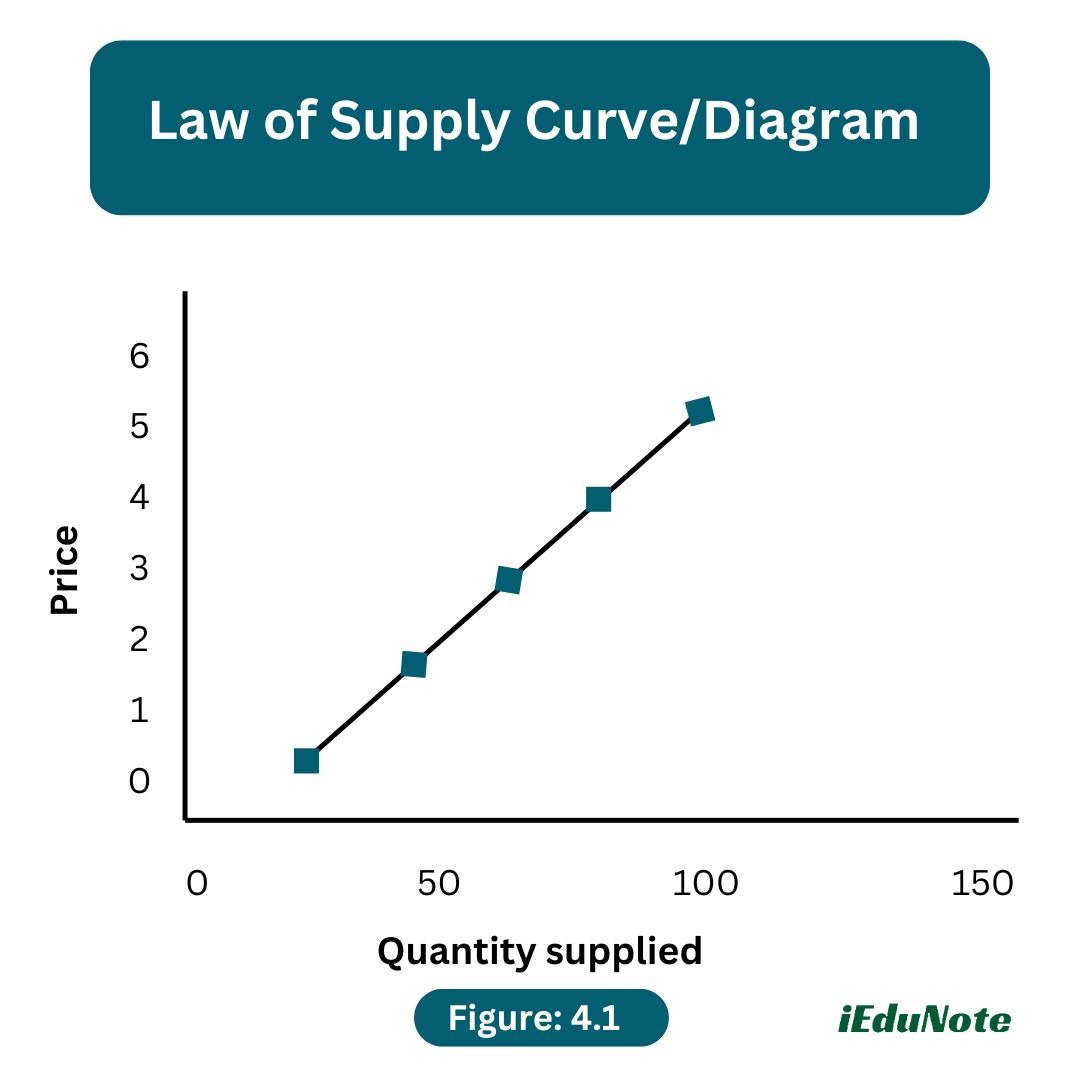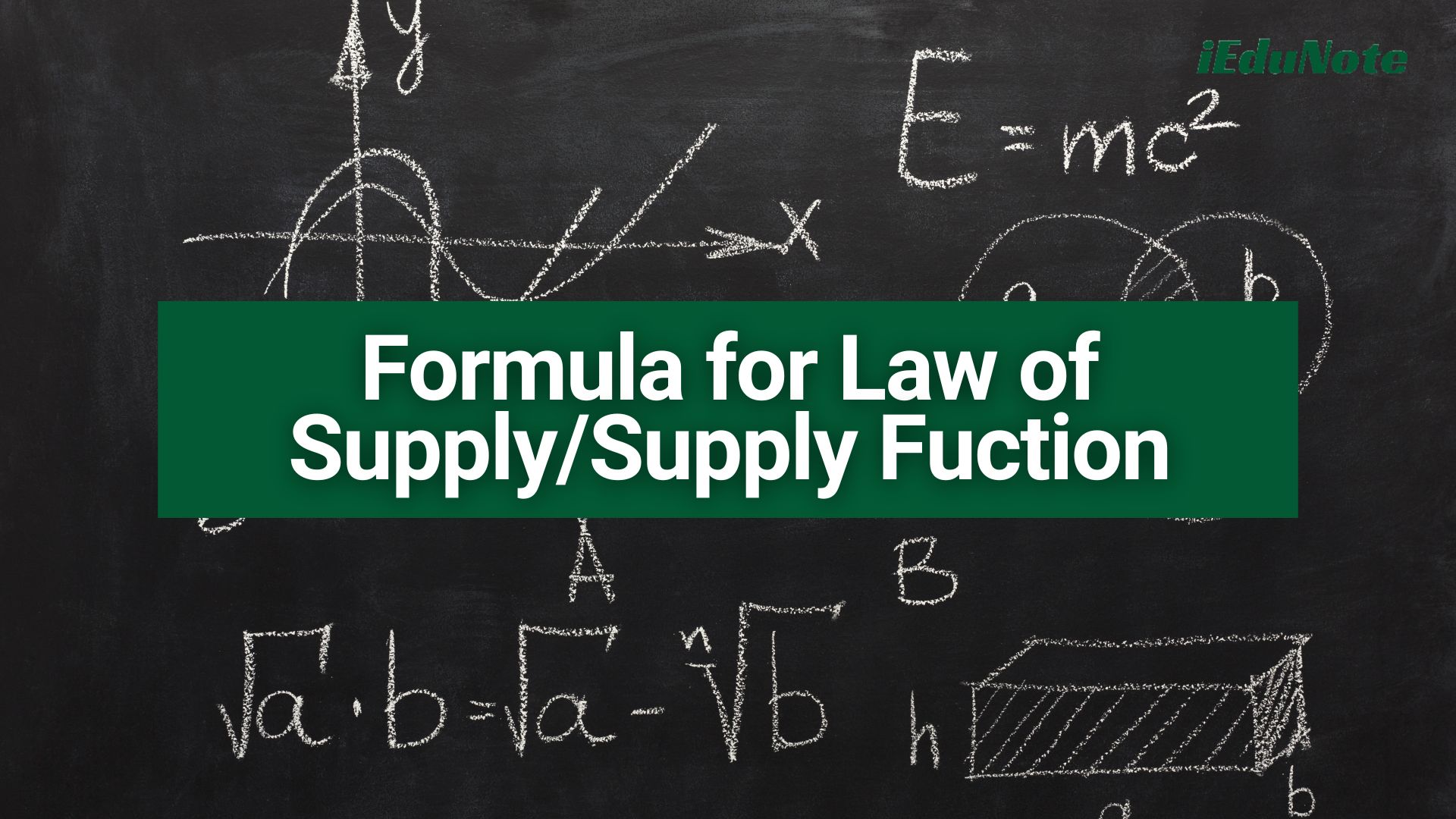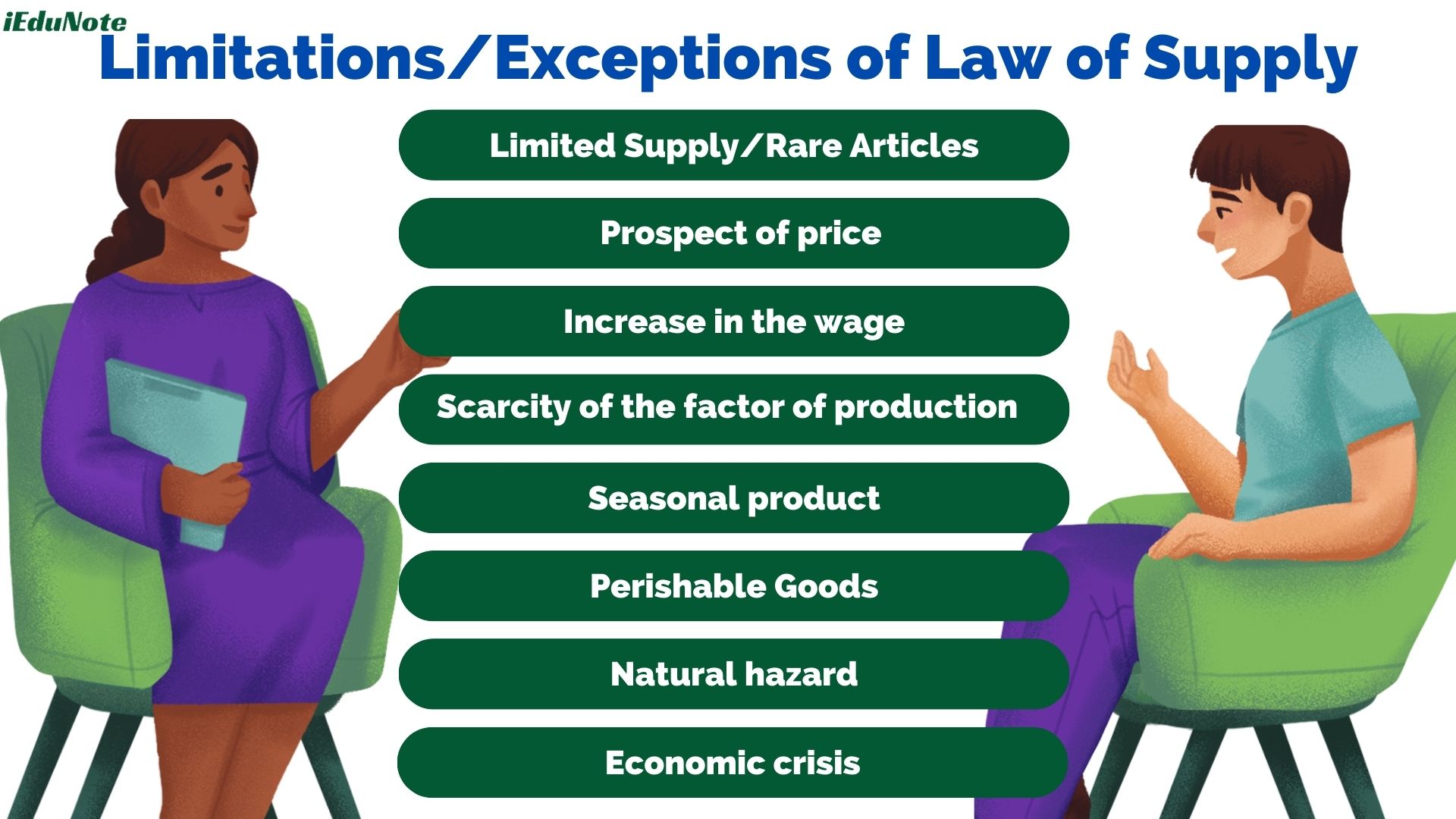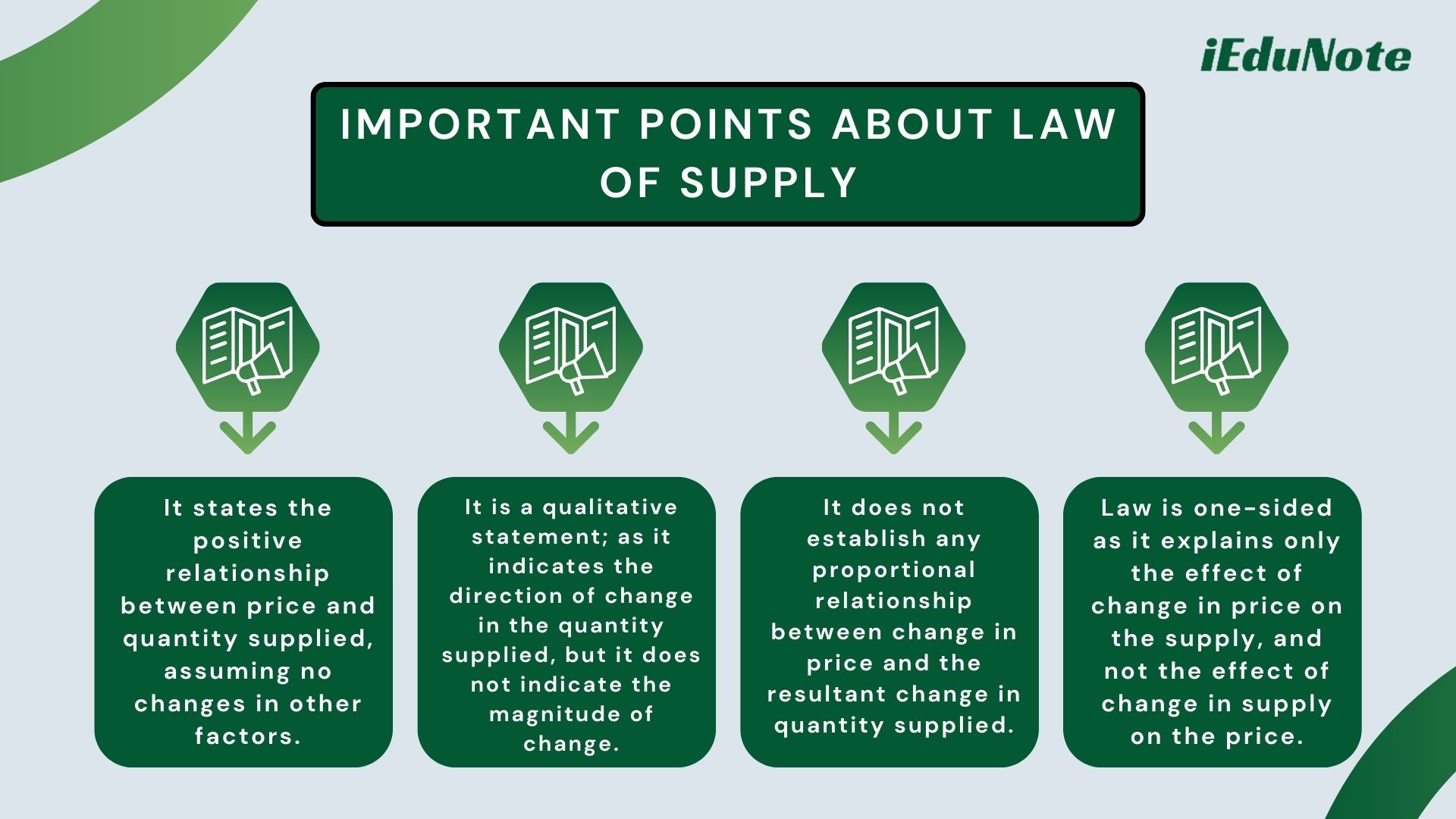It is the amount of a commodity that sellers are able and willing to offer for sale at different prices per unit of time.
In the words of Meyer, “Supply is a schedule of the amount of a good that would be offered for sale at all possible price at any period of time; e.g., a day,’ a week, and so on”.
Law of Supply
“Other things remaining the same, if the price of a commodity increases its quantity supplied increases and if the price of a commodity decreases, quantity supplied also decreases”.
There is a direct relationship between the price of a commodity and its quantity offered for sale over a specified period.
When the price .«of goods rises, other things remain the same, the quantity that is offered for sale increases, and as the price falls, the amount available for sale decreases.
This relationship between price and the quantities that suppliers are prepared to offer for sale is called the law of supply.
It is, therefore, important here to mention that the relationship between price and the quantities that suppliers are prepared to offer for sale is positive.
Explanation of Law of Supply
The law of supply, in short, states that (ceteris paribus) sellers supply more goods at a higher price than they are willing to supply at a lower price.
Supply Function:
The supply function is now explained with the help of a schedule and a curve.
Supply Schedule of a Commodity
| Price per unit (Px) | 5 | 4 | 3 | 2 | 1 |
| Quantity supplied (Qxs) | 100 | 80 | 60 | 40 | 20 |
In the table above, the producers are able and willing to offer for sale 100 units of a commodity for 5$. As the price falls, the quantity offered for sale decreases.
For 1$, the quantity offered for sale is only 20 units.
Law of Supply Curve/Diagram
The market supply data of the commodity X as shown in the supply schedule is now presented graphically.

In figure (4.1) the price is plotted on the vertical axis and the quantity supplied on the horizontal axis. The five points show each price-quantity combination.
The supply curve slopes upward from left to right, indicating that less quantity is offered for sale at a lower price and more quantity at higher prices. Each of the points shows the combination of price and quantity supplied.
The formula for Law of Supply/Supply Function

The supply function can also be expressed in symbols. Qs = f (Px, Tech, Si, Fn, X) Here, Qs = Quantity supplied of commodity x by the producers. f = Function Px = Price of commodity x. Tech = Technology.
Si = Supplies of inputs. Fn = Features of nature. X = Taxes/Subsidies.
If four non-price factors indicate that these variables also affect the supply but they are held constant then the supply function can also be symbolized as
Qs = f (Px) ceteris paribus
Example of Law of Supply
The law of supply is based on a moving quantity of materials available to meet a particular need. Supply is the source of economic activity.
Supply, or the lack of it, also dictates prices. Supply can be used to measure demand.
In the lack of customers, oversupply occurs. An oversupply is often a loss, for that reason, undersupply generates demand in the form of orders or secondary sales at higher prices.
If ten people want to buy a pen, and there’s only one pen, the sale will be based on the level of demand for the pen.
The supply function requires more pens, which generates more production to meet demand.
Assumptions of the Law of Supply
The assumptions of the law of supply are as under:
No change in the cost of production
It is assumed that there is no change in the cost of production because the profit decreases with the increase in the cost of production, causing a decrease in supply.
If the price of a commodity decreases and the cost of production also decreases at the same time, the quantity supplied does not decrease, and profit remains constant.
No change in technology
It is also assumed that the technique of production does not change. If better methods of production are invented, profit increases at the previous price.
The sellers increase supply, and the law of supply does not operate.
No change in climate
It is also assumed that there is no change in climatic situations.
For example, at any place, a flood or earthquake occurs. The supply of goods decreases at that place at the previously prevailing price.
No change in the prices of substitutes
If the prices of substitutes of a commodity fall, then the tendency of consumers divert to substitutes; therefore, the supply of a commodity falls without any change in price.
No change in natural resources
If the quantity of natural resources (minerals, gas, coal, oil, etc.) increases, the cost of production decreases. It causes an increase in the quantity supplied.
No change in the price of capital goods
The capital goods are raw materials, machinery, tools, etc. The cost of production increases due to an increase in the prices of capital goods. It can lead to a decrease in the quantity supplied.
No change in the political situation
The amount of investment is affected by the change in the political situation of a country. The production of goods decreases due to a decrease in investment.
No change in tax policy
It is also assumed that the taxation policy of the government does not change. The increase in taxes affects investment and production, and the supply of goods decreases.
Limitations/Exceptions of Law of Supply:

Limited Supply/Rare Articles
There are some rare things the supply of which is limited and inelastic. In this case, if the price increases, supply cannot be increased.
Such as the pictures of well-known artists, the painting of the Mona Lisa, etc.
Prospect of price
If the sellers think that there is a possibility of future price changes, then this law will not operate.
Increase in the wage
Sometimes, an increase in the wage rate may cause a decrease in the supply of labor because of surplus income of labor. Thus the law doesn’t operate.
Scarcity of the factor of production
If any factor of production is not available or if there is any problem of transportation or communication, then the law may not operate.
Seasonal product
In the case of seasonal products, supply doesn’t decrease despite a price decrease.
Perishable Goods
In the case of perishable goods, like vegetables, fruits, etc., sellers will be ready to sell more even if the prices are falling. It happens because sellers cannot hold such goods for long.
Natural hazard
If production is hampered due to natural calamities, then supply doesn’t increase despite a price increase.
Economic crisis
For economic disorder or crisis, sometimes the producers or sellers sell a greater amount of commodity for lower prices.
Important Points about Law of Supply:

It states the positive relationship between price and quantity supplied, assuming no changes in other factors.
It is a qualitative statement; as it indicates the direction of change in the quantity supplied, but it does not indicate the magnitude of change.
It does not establish any proportional relationship between the change in price and the resultant change in quantity supplied.
Law is one-sided as it explains only the effect of change in price on the supply and not the effect of change in supply on the price.
Importance of Law of Supply:
1. Supply responds to changes in prices differently for different goods, depending on their elasticity or inelasticity.
If goods are elastic, then a modest change in price leads to a large change in the quantity supplied. If goods are inelastic, then a change in price leads to relatively no response in the quantity supplied.
An example of an elastic good would be soft drinks, whereas an example of an inelastic service would be physicians’ services.
Producers will be interested in supplying more inelastic goods such as gas because they will earn more profit from it.
2. The law of supply is an economic principle that states that there is a direct relationship between the prices of a good and how much of the good a producer is ready to supply.
3. As the price of a good increase, suppliers will want to supply more of it. However, as the price of a good decreases, suppliers will not want to supply as much of it.
For producers to want to produce a good, the profit must be greater than the opportunity cost of production.
4. Entrepreneurs enter into business ventures to make a profit. A profit occurs when the revenues from the goods a producer supplies exceed the opportunity cost of their production.
However, consumers must pay for the goods at a price offered to them. Therefore, a consumer has to pay for the good higher than its cost of production.
5. So, supplier’s profits are dependent on consumers’ demands and values. However, when suppliers do not earn enough revenue to cover the cost of production of the good, they face a loss.
Losses occur whenever consumers pay for a good less than the alternative goods that could be produced with the same resources.
Determinants of Supply

When the supply of the commodity rises or falls due to non-price determinants, the supply is said to have increased or decreased.
The increases or decreases or the rise or fall in supply may take place on account of various factors. They are briefly stated below:
Changes in Factor Price
The rise or fall in supply may take place due to changes in the cost of production of a commodity. If the prices of various factors of production used for a particular commodity increase, then the total cost of production will also increase.
There will be a reduction in the supply of that commodity because the quantity demanded decreases with a price rise.
Conversely, if the prices of the various factors of production fall, then in lowering the cost of production, an increase in the supply occurs.
Changes in Technique
The supply of a commodity may also be affected by progress in technique. If an improved technology is used, then it reduces the cost of production.
As a result, greater production and an increase in the supply of the commodity will occur. The supply curve will shift to the right of the original supply curve.
Improvement in the Transportation Systems
The supply of the commodity may also increase due to improvements in the means of communication and transportation.
If the means of transport are cheap and fast, then the supply of the commodity can be increased at short notice at a lower price.
Climatic Changes in Case of Agricultural Products
The supply of agricultural products is directly affected by the weather conditions and the use of better methods of production.
If rain is timely, plentiful, and well-distributed, and improved methods of cultivation are employed, then other things remain the same, there will be bumper crops.
It would then be possible to increase the supply of agricultural products.
Political Changes
The increase or decrease in supply may also take place due to political disturbances in a country.
If a country engages in wars against another country or some kind of political disturbances take place, then supply will decrease.
Taxation Policy
If a government levies heavy taxes on the import of particular commodities, then the supply of these commodities is reduced at each price. The supply curve shifts to the left.
Conversely, if the taxes on output in the country are low and the government encourages the import of foreign commodities, then the supply can be increased easily.
The supply curve shifts to the right of the original supply curve.
Goals of Firms
If the firms expect higher profits in the future, they will take the risk and produce goods on a large scale, resulting in a larger supply of commodities. The supply curve shifts to the right.